How to Do an Inverted Row (6 Variations) – Illustrated Guide
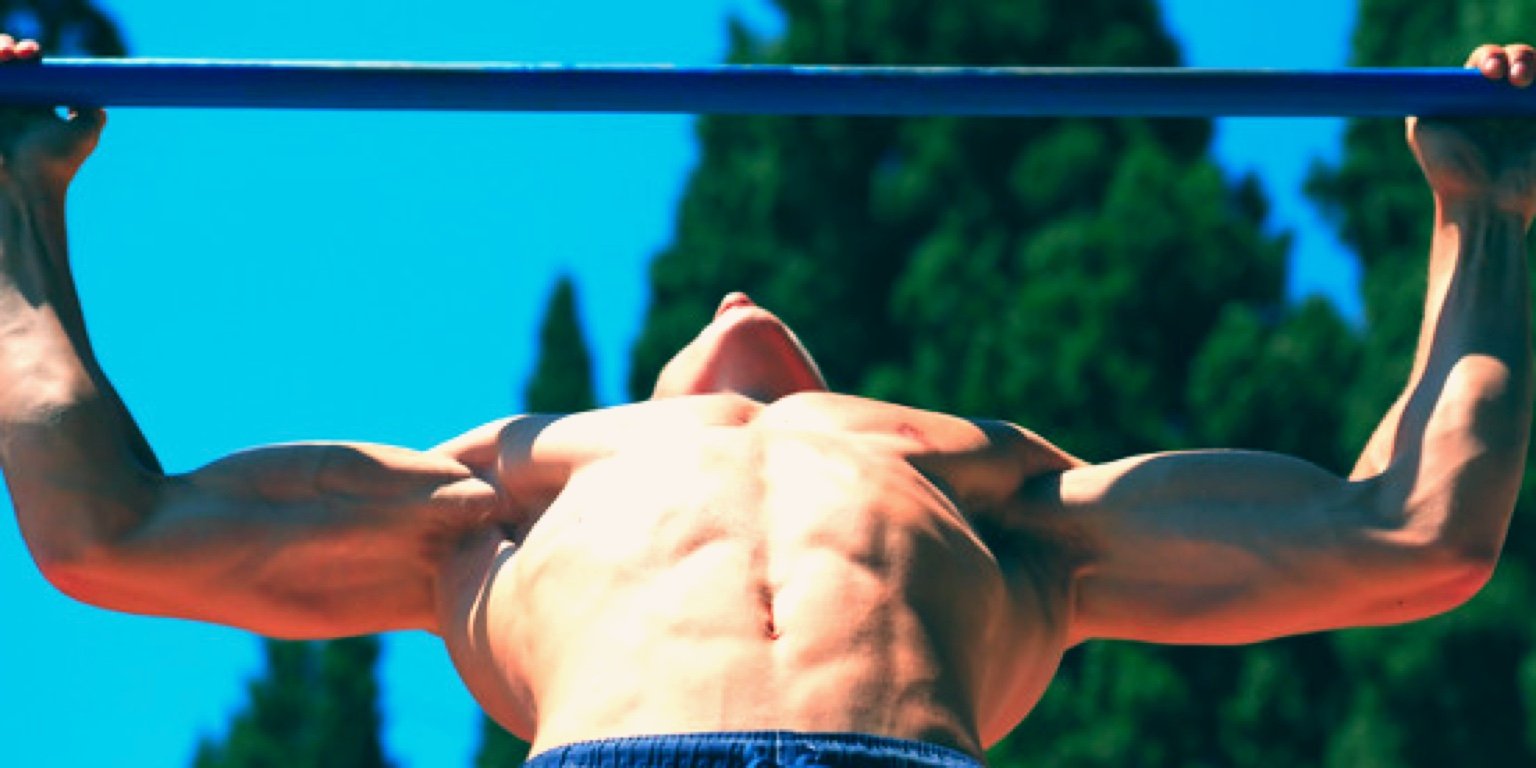
The inverted row is a bodyweight exercise where you pull your own body up towards a bar or TRX band. It's a compound exercise that works your back muscles, including your lats, traps and rhomboids, as well as your shoulders and arm muscles.
You will need a study bar or Smith machine to perform the inverted row. You can also use a weighted vest for extra challenge.
Jump to
- Inverted rows
- TRX inverted rows
- Feet raised inverted rows
- Single leg inverted rows
- Legs bent inverted rows
- Weighted inverted rows
Inverted rows vs other back and shoulder exercises
Bent over rows, lat pulldowns, pull ups and inverted rows are compound exercises that effectively target the muscles of your back, particularly your latissimus dorsi.
- Inverted rows vs bent over rows - Bent over rows largely target the same muscle groups as inverted rows. However, bent over rows require more stability and control due to their bent-over position. They also engage your lower back and hamstrings more compared to inverted rows. Inverted rows are easier to perform and also minimize the risk of lower back strain.

- Inverted rows vs lat pulldowns - The lat pulldown is performed on a machine, which can allow you to lift heavy weights. You also benefit from isolating your lats more directly. Inverted rows, on the other hand, can be done anywhere with a sturdy bar or set of rings. The exercise also engages your biceps, traps, rhomboids and core, providing a more comprehensive upper body workout.
- Inverted rows vs pull ups - You perform a pull up by hanging from a bar and pulling your body up until your chin is over the bar. The exercise primarily targets your latissimus dorsi (lats) but also works your biceps, traps and other upper body muscles. With an inverted row, your feet remain on the ground. This reduces the load and makes the exercise more accessible for all fitness levels.
Muscles
Latissimus dorsi (lats)
Your latissimus dorsi (lats) are large muscles that run along the sides of your middle-to-lower back. This is the largest muscle in your back and gives your back its distinctive V-shape.

Lats play a key role in pulling your arms down when extended above your head. Strong lats help with everyday activities and exercises like swimming and pull-ups.
Your lats are a primary muscle targeted by inverted rows. You can put even more emphasis on your lats by using a wide grip on the bar.
Rhomboids
Your rhomboids are muscles in your upper back that sit between your shoulder blades. Your rhomboids are crucial for upper back stability and posture, and allow you to pull your shoulder blades together.
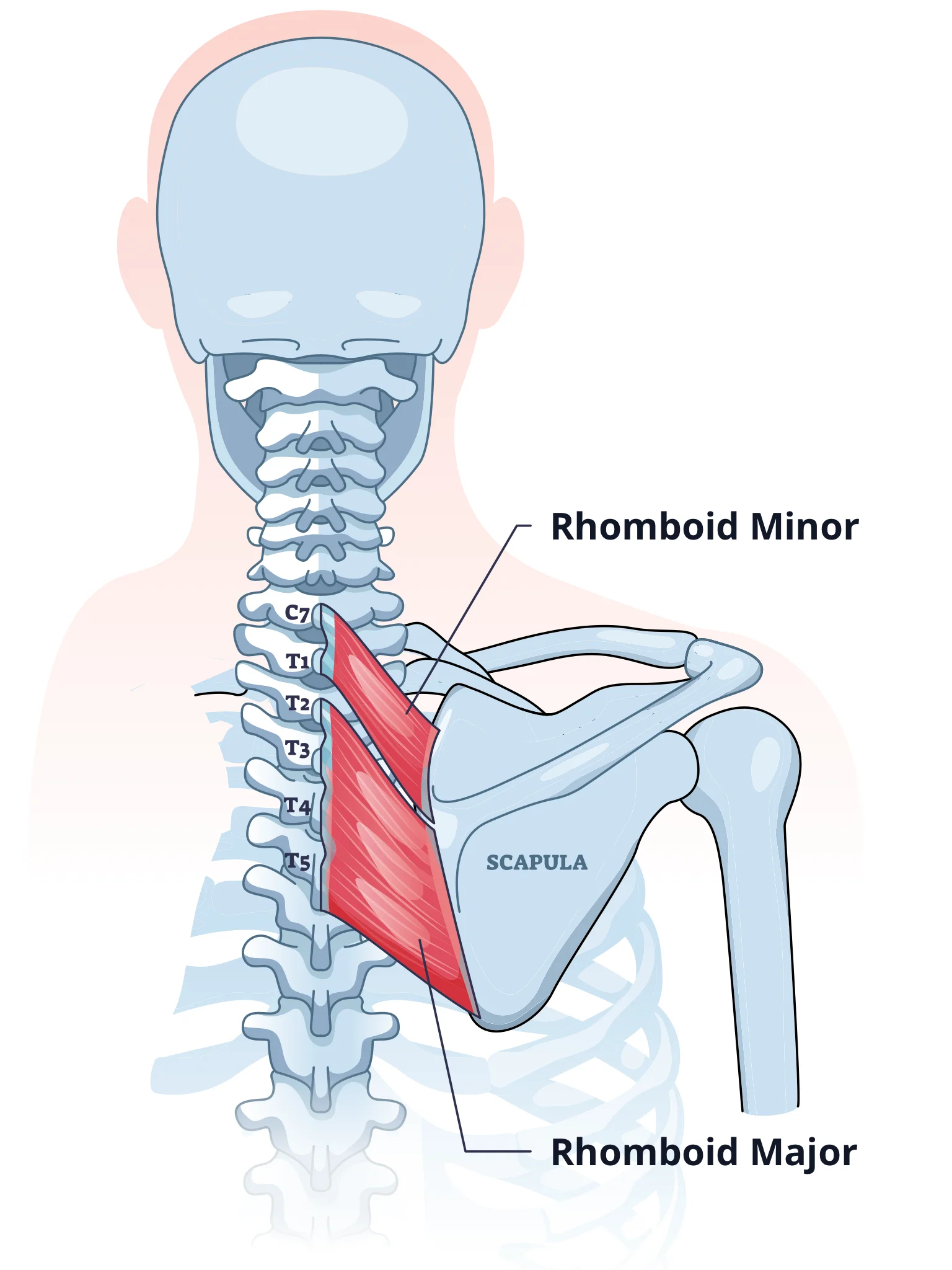
The rhomboids are made up of two muscles – the rhomboid major and rhomboid minor. Together, these muscles form the ‘rhomboid’ shape. The rhomboid major is the larger muscle, and sits below the rhomboid minor.
Rhomboids are much smaller than other muscles in your back. Your lats, for example, are the biggest muscles in your back and are much more powerful than your rhomboids. But while your rhomboids might be smaller, they play a critical role in stabilizing your shoulder blades.
You can place more emphasis on your rhomboids (and less on your lats) by using a close grip inverted row.
Trapezius (traps)
Your trapezius (traps) muscles are the large triangular-shaped muscles that extend all the way over the back of your neck and deltoids, extending right down to the upper middle part of the back. It is divided into three parts called the upper, middle and lower traps.
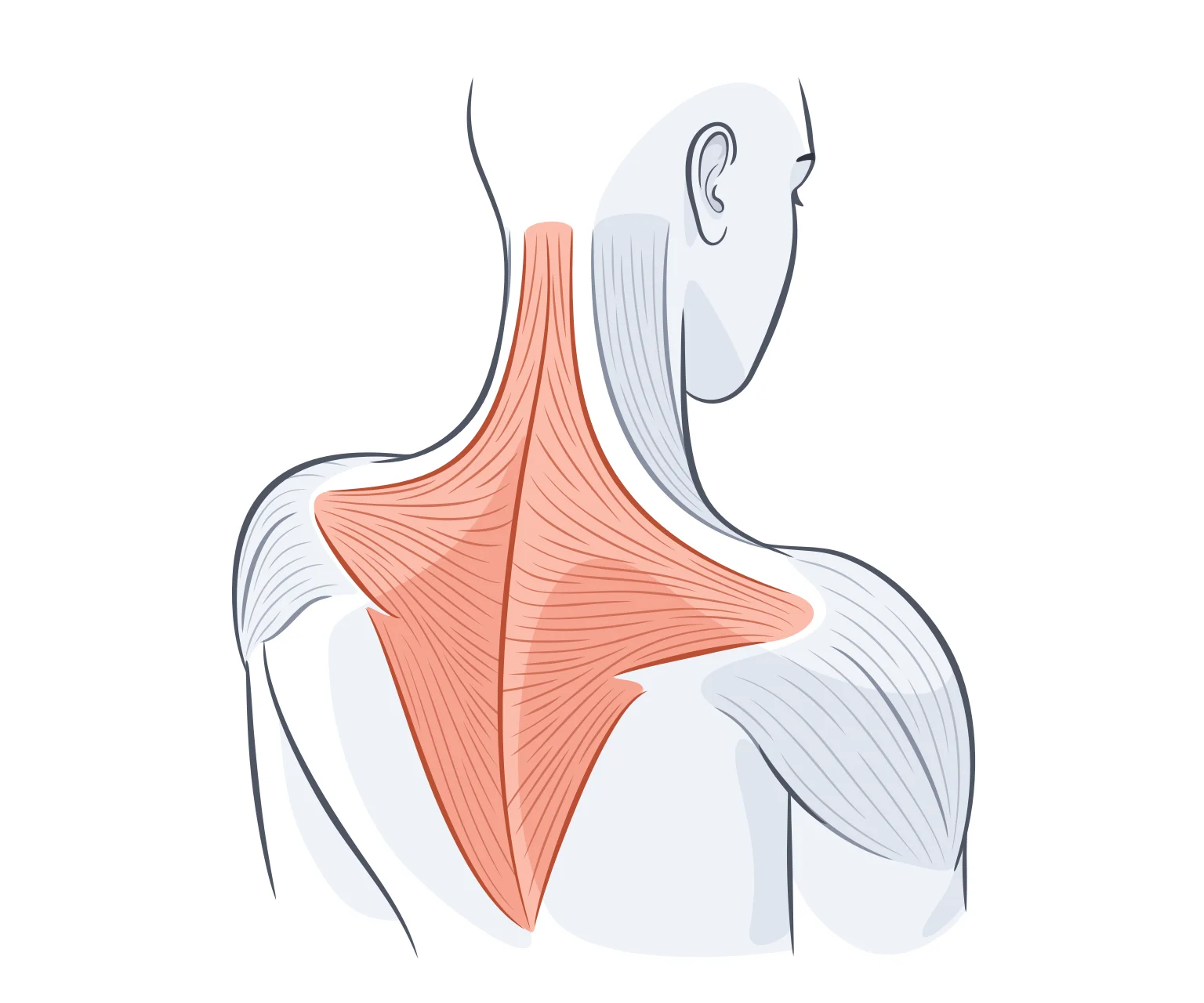
Your traps are responsible for moving your shoulders and assisting in the movement of your arms out to the side. Your middle and lower traps also help to retract and depress your shoulder blades. These movements contribute to the pulling motion of pull ups and inverted rows.
Inverted rows
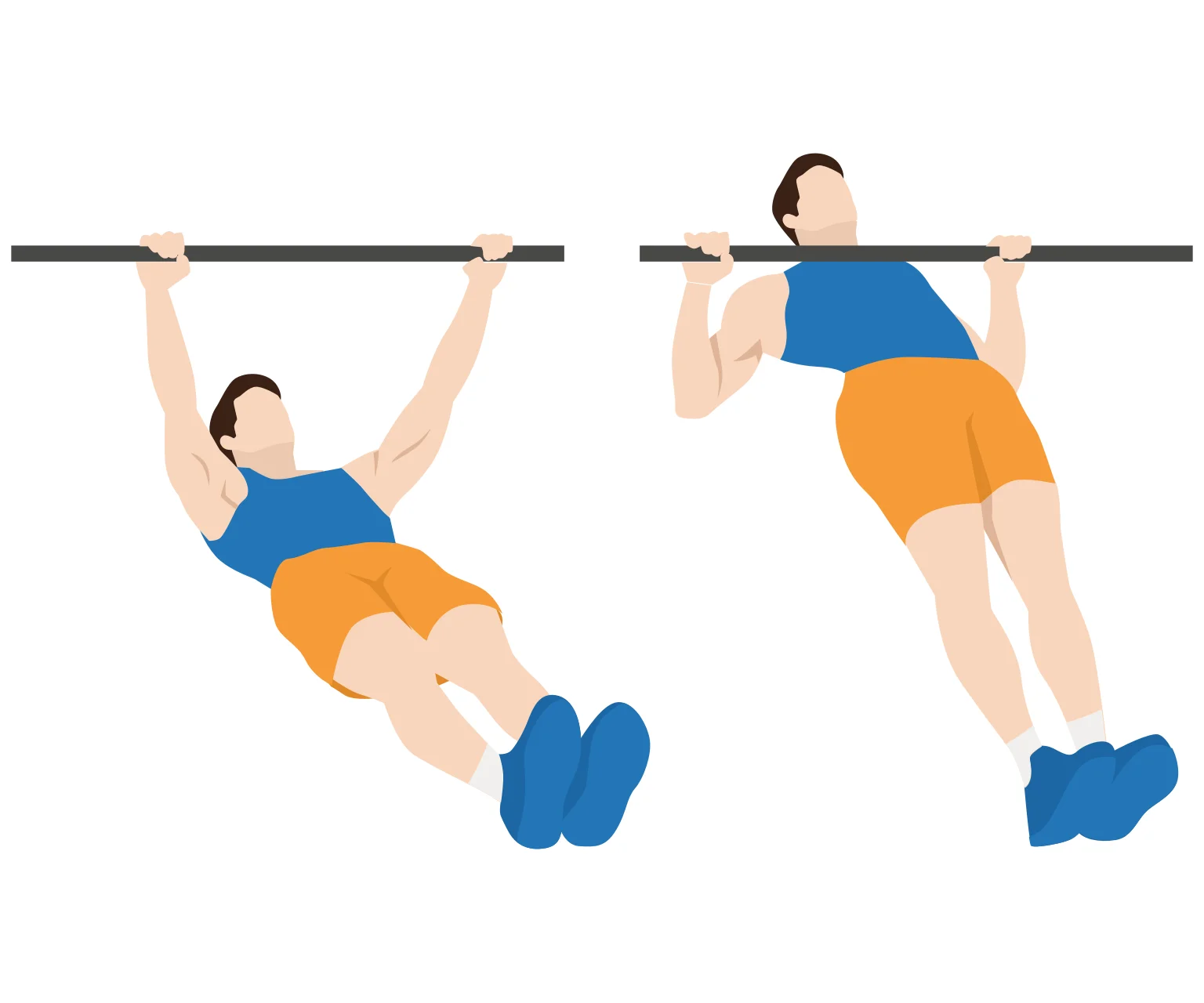
The inverted row targets multiple muscle groups, including your back muscles, biceps and traps, and many stabilizer muscles in your upper body and core.
Inverted rows are suitable for all fitness levels. If you are a beginner, you can start with a high bar and gradually lower the bar as your strength increases. The angle of your inverted row makes the exercise more challenging.
You can add inverted rows to your regular upper body or full body workouts to strengthen your back and arms.
How to do
- Set a bar to about waist height.
- Stand facing the bar and grab it with an overhand grip. Your hands should be wider than shoulder-width apart on the bar.
- Walk your feet forwards so you are hanging underneath the bar. You legs and torso should be straight and lined up. Your arms should be fully extended in the starting position.
- Pull your chest towards the bar, driving your elbows towards your hips.
- Squeeze at the top of the movement.
- Finally, lower yourself back down to the starting position.
- Repeat for the desired number of reps.
Sets and reps
Inverted rows are typically performed for 3-4 sets of 8-12 reps. This range is ideal for muscle growth and strength gains.
If you're a beginner, you might want to start with fewer sets and gradually increase as you get stronger.
TRX inverted rows
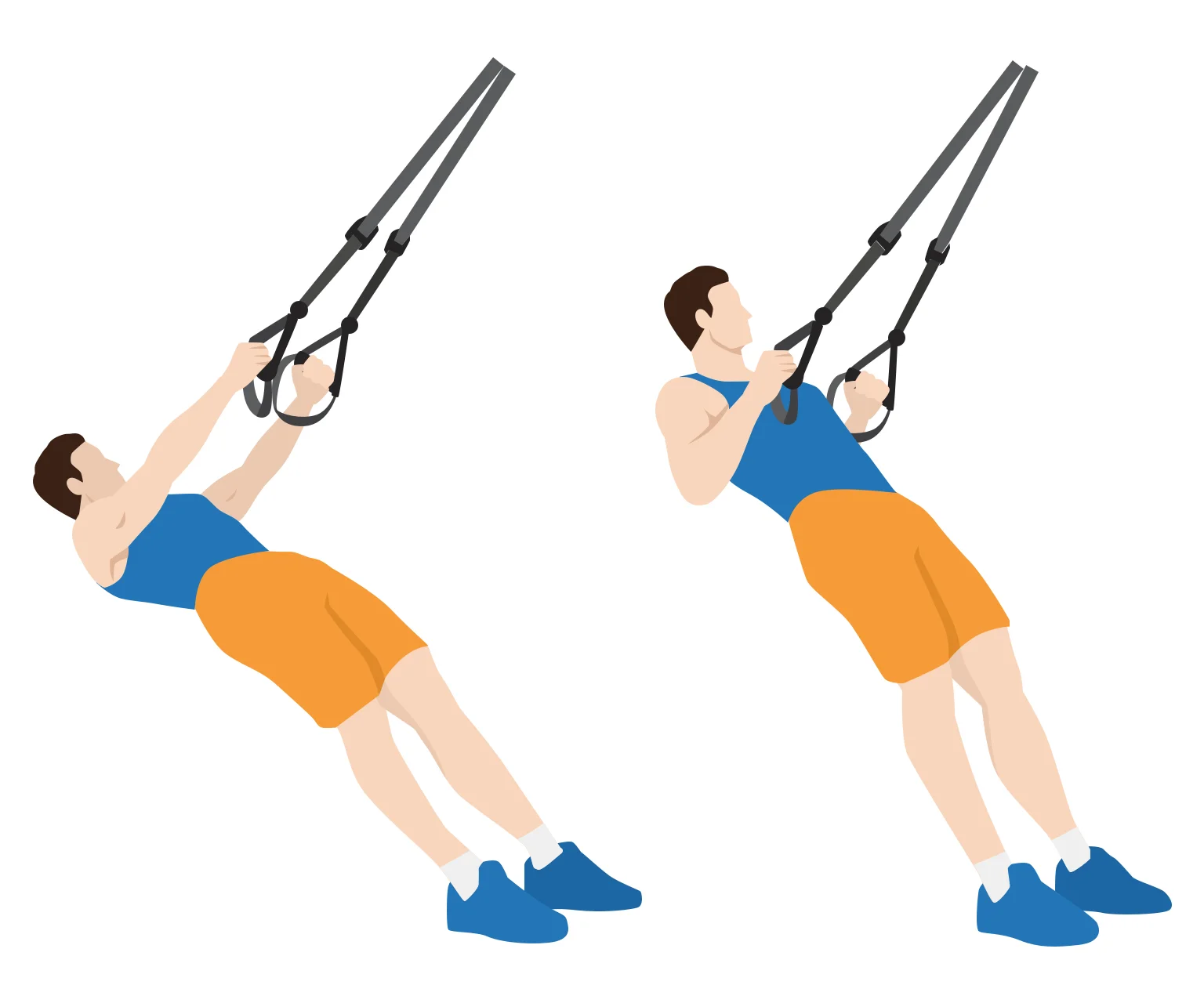
You can also use TRX suspension straps to perform the inverted row. The use of TRX straps introduces an element of instability to the exercise, requiring greater engagement of your core and stabilizing muscles. This makes it slightly more comprehensive at working your upper body, and can benefit your overall balance and coordination.
How to do
- Adjust the TRX straps to about waist height.
- Stand facing the anchor point. Grab the handles and walk your feet forward until your body forms a straight line and is leant back.
- In the starting position, your arms should be fully extended.
- Pull yourself up until your chest almost touches the handles. Keep your body straight through the entire movement.
- Finally, lower yourself back down to the starting position.
- Repeat for the desired number of reps.
Feet raised inverted rows
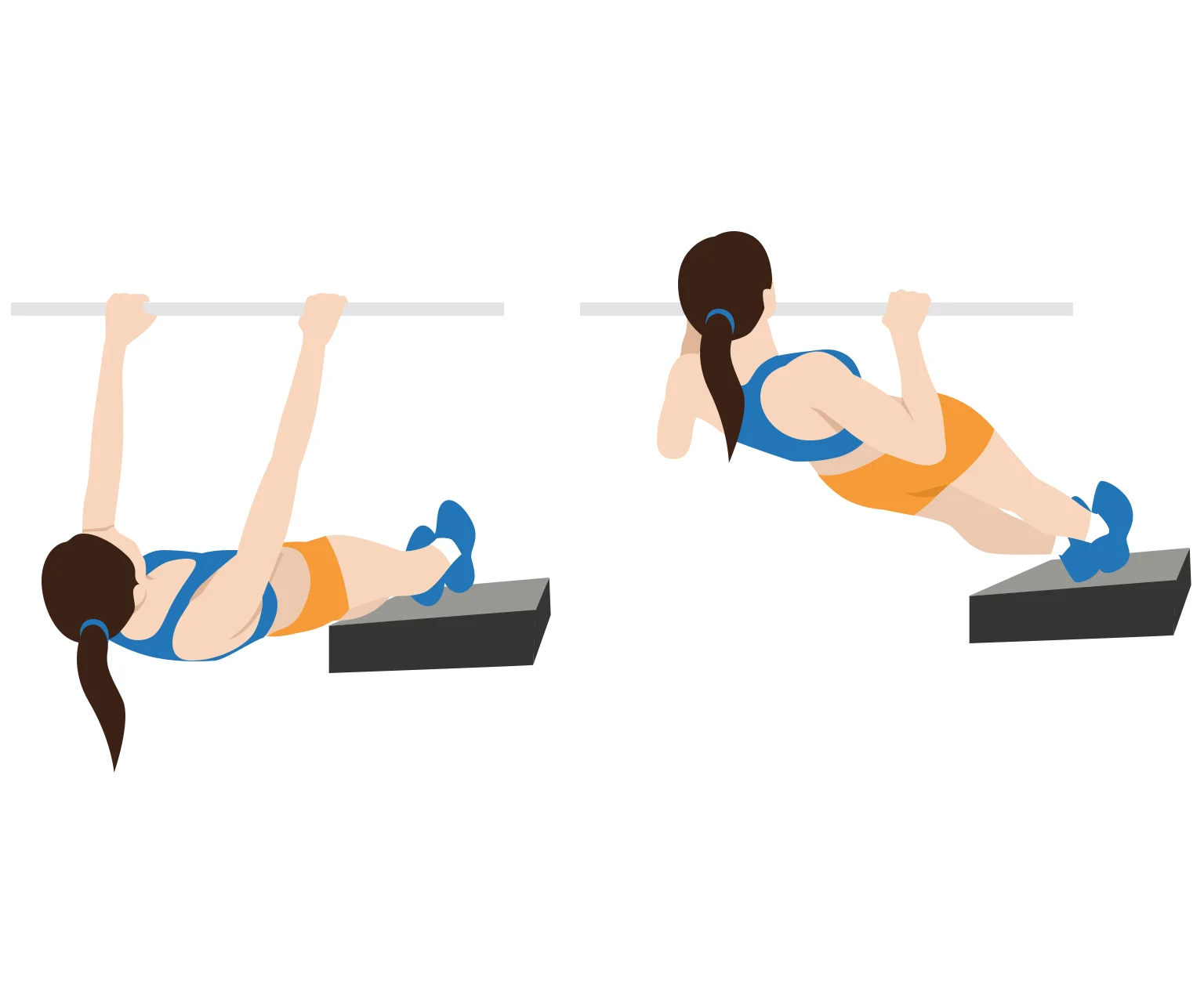
Raising your feet makes the inverted row more challenging. It also demands more core strength and stability because you have to engage your core to keep your hips from sagging.
Feet-raised inverted rows are an excellent exercise for intermediate to advanced trainees who wish to challenge their upper body strength and stability.
How to do
- Set a bar to about waist height.
- Position a box or bench in front of the bar where you can rest your feet.
- Stand facing the bar and grab it with an overhand grip. Your hands should be wider than shoulder-width apart on the bar.
- Walk your feet forwards so you are hanging underneath the bar. One foot at a time, place both feet onto the box.
- Pull your chest towards the bar, driving your elbows towards your hips.
- Squeeze at the top of the movement.
- Finally, lower yourself back down to the starting position.
- Repeat for the desired number of reps.
Single leg inverted rows
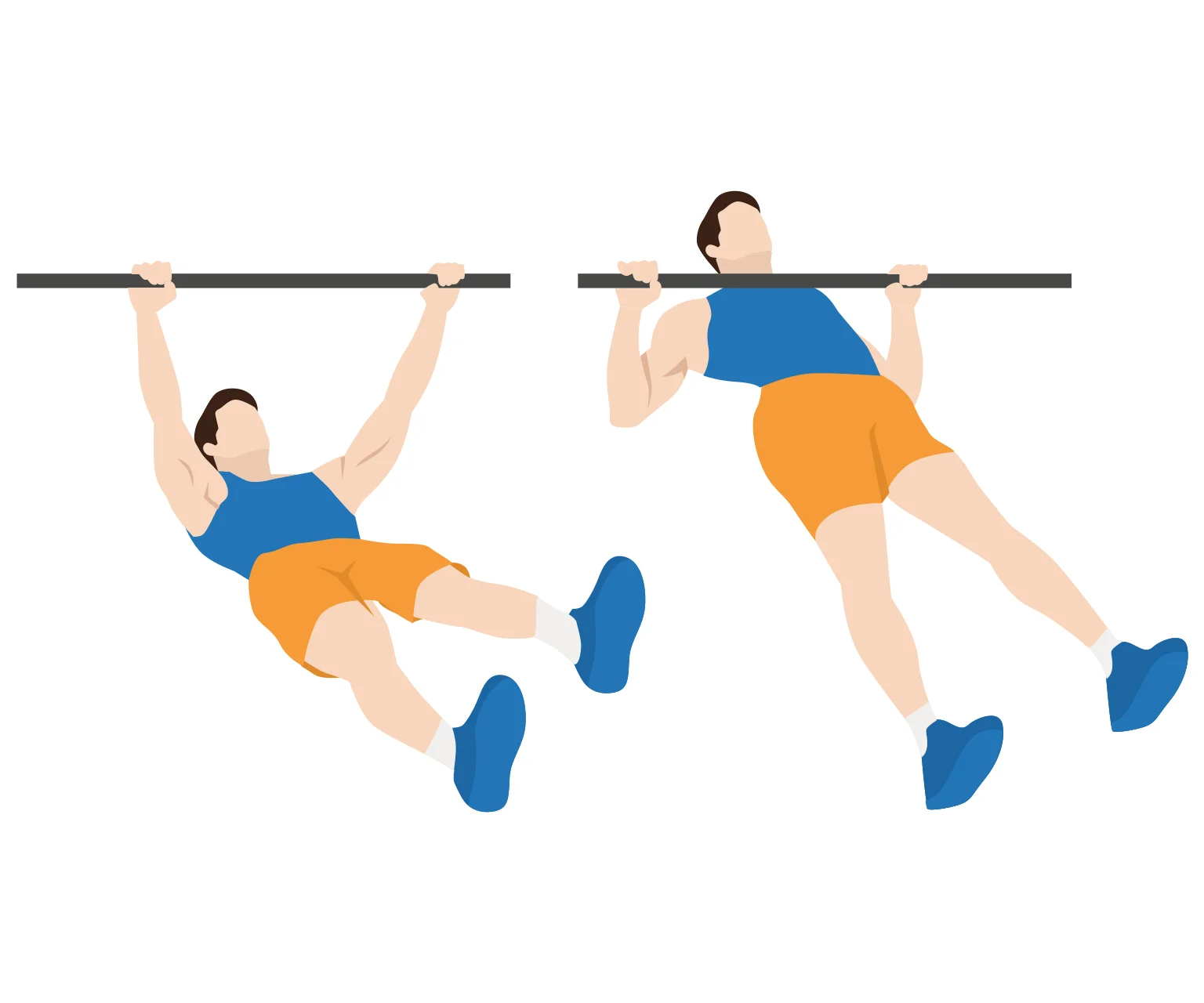
The single-leg inverted row is a simple modification where you raise one foot while performing the row. This adds an extra challenge and demands more balance and stability. This is a great variation to improve your overall body strength in your upper body and core.
How to do
- Set a bar to about waist height.
- Stand facing the bar and grab it with an overhand grip. Your hands should be wider than shoulder-width apart on the bar.
- Walk your feet forwards so you are hanging underneath the bar. You legs and torso should be straight and lined up. Your arms should be fully extended in the starting position.
- Raise one foot up into the air. Keep it raise through the entire movement.
- Pull your chest towards the bar, driving your elbows towards your hips.
- Squeeze at the top of the movement.
- Finally, lower yourself back down to the starting position.
- Repeat for the desired number of reps.
Legs bent inverted rows
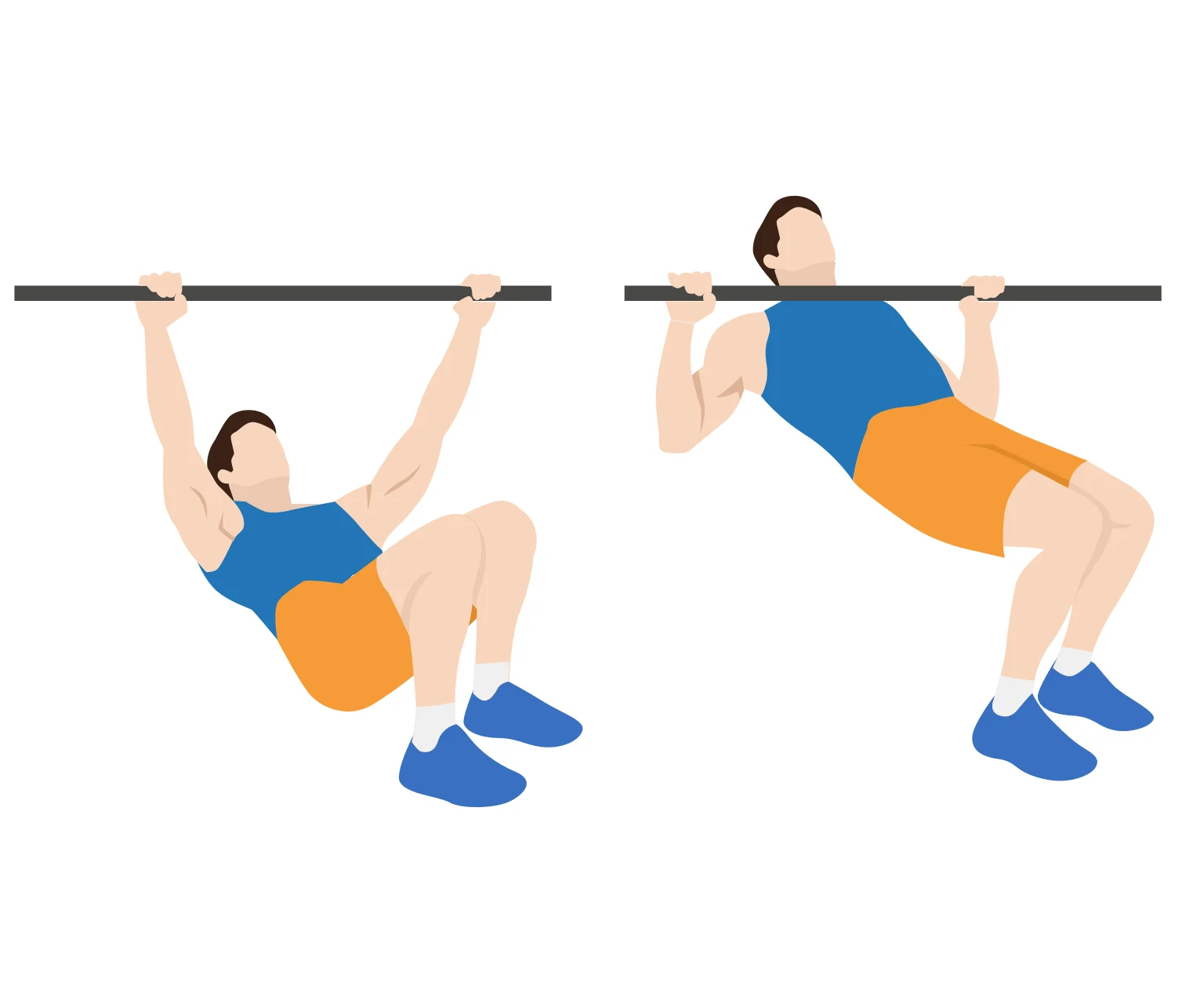
In this variation of the inverted row, your knees are bent and your feet are planted flat on the ground. This places less strain on your lower back and allows for a more controlled movement. As a beginner, you might find the legs-bent inverted row easier to perform than the traditional variation where you keep your entire body straight.
How to do
- Set up a bar at waist height.
- Sit on the ground beneath the bar. Reach up and grab the bar with an overhand grip. Your hands should be shoulder-width apart on the bar.
- Bend your knees and plant your feet on the ground.
- Begin by pulling your chest up to the bar. Squeeze your shoulder blades together as you lift.
- Finally, lower yourself back down in a controlled movement.
- Repeat for the desired number of reps.
Weighted inverted rows
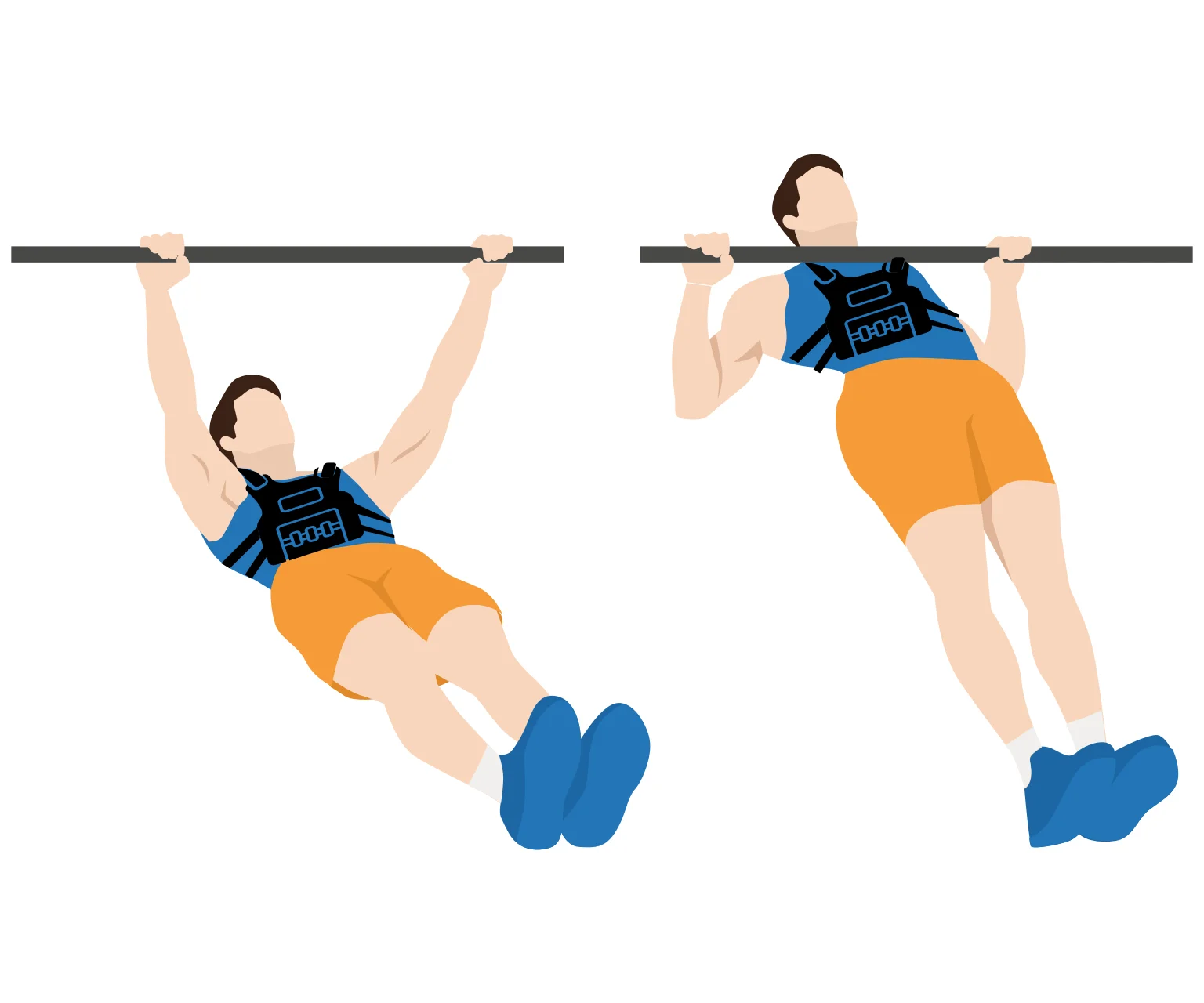
For even more challenge, you can add additional weight to the exercise. This is typically in the form of a weighted vest or a weighted backpack. This added weight forces your muscles to work harder than a purely bodyweight row.
How to do
- Start by securing the weighted vest of backpack. Add an appropriate amount of weight for your fitness level.
- Set a bar to about waist height.
- Stand facing the bar and grab it with an overhand grip. Your hands should be wider than shoulder-width apart on the bar.
- Walk your feet forwards so you are hanging underneath the bar. You legs and torso should be straight and lined up. Your arms should be fully extended in the starting position.
- Pull your chest towards the bar, driving your elbows towards your hips.
- Squeeze at the top of the movement.
- Finally, lower yourself back down to the starting position.
- Repeat for the desired number of reps.
Tips
To make the exercise more challenging
Here's some ways you can make the inverted row more challenging:
- Decrease the height of the bar - A higher bar makes the exercise easier, because you are not "lifting" as much of your bodyweight. Instead most of your bodyweight is supported by your feet. The lower the bar, the further you have to lean back for the exercise. This places additional challenge on your back muscles and biceps to support your body through the exercise.
- Add weight - You can directly add weight to the exercise by wearing a weighted vest or backpack. Add variations of the inverted row allow you to increase the weight in this way.
- Alter your grip - Using an overhand (pronated) grip shifts the focus to your back muscles, while an underhand (supinated) grip focuses on your biceps.
Proper form
Here are some tips to ensure you maintain proper form while performing the inverted row:
- Keep your body straight - You should avoid recruiting your lower back in the inverted row. The focus should be on your upper body, particularly your back muscles, rather than your hips or lower back. Maintaining a straight body helps maximize the effectiveness of the exercise and minimizes the risk of injury.
- Pull with your elbows - Try pulling with your elbows rather than your hands. This helps engage the targeted muscles (your back muscles) more effectively. It also helps prevent wrist strain.
- Squeeze your shoulder blades - Squeeze your shoulder blades at the top of the movement to ensure you are fully activating your rhomboids and traps. This maximizes the benefit of the exercise for your back.
